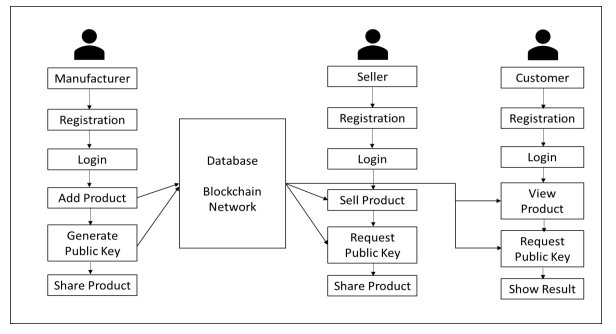
Safeguarding Authenticity
In today’s global marketplace, counterfeiting has become an omnipresent threat, plaguing both consumers and businesses alike. The proliferation of fake products not only undermines brand reputation but also poses significant risks to consumer health and safety. However, with the advent of blockchain technology, a groundbreaking solution emerges – the Fake Product Identification System.
Source Code:
https://github.com/kylelobo/AuthentiFi
Counterfeit products have inundated the market, mirroring the designs of authentic brands while compromising on quality and integrity. These fraudulent items not only infringe upon intellectual property rights but also deceive unsuspecting consumers, causing financial losses and potential harm.
Traditional methods of authentication, such as holographic stickers or serial numbers, are often insufficient in combating the sophistication of counterfeiters. Moreover, discerning between genuine and fake products can be a daunting task, even for seasoned experts.
The Fake Product Identification System harnesses the power of blockchain technology to establish an immutable record of product authenticity. By integrating blockchain into the manufacturing process, each genuine product is assigned a unique QR code linked to a decentralized ledger.
How It Works:
- QR Code Integration: During the manufacturing phase, a QR code is affixed to each genuine product. This QR code serves as a digital fingerprint, encapsulating crucial details about the item’s origin, specifications, and authenticity.
- Blockchain Database: The QR code is linked to a blockchain database, where a cryptographic hash of the product’s information is stored securely. This ensures tamper-proof verification and transparency throughout the supply chain.
- Consumer Verification: Armed with a smartphone, consumers can effortlessly scan the QR code using a dedicated mobile application. The app interfaces with the blockchain database, verifying the authenticity of the product in real-time.
- Authentication Notification: Upon scanning the QR code, the app promptly notifies the consumer of the product’s authenticity status. If the scanned code corresponds to a legitimate entry in the blockchain, a confirmation of authenticity is relayed. Conversely, if the product is flagged as counterfeit, appropriate warnings are issued.
Project Examples:
- Luxury Goods: High-end fashion houses and luxury brands can leverage the Fake Product Identification System to safeguard against counterfeit replicas. By embedding QR codes into their products, they provide consumers with peace of mind and assurance of authenticity.
- Pharmaceuticals: In the pharmaceutical industry, counterfeit medications pose a grave threat to public health. Implementing blockchain-based authentication ensures that patients receive genuine medications, reducing the risk of harmful side effects.
- Electronics: Electronics manufacturers can combat the proliferation of counterfeit gadgets and accessories by adopting the Fake Product Identification System. By enabling consumers to verify the authenticity of their purchases, trust and brand loyalty are bolstered.
The Fake Product Identification System represents a pivotal advancement in the fight against counterfeit goods. By harnessing the transparency and immutability of blockchain technology, consumers can make informed purchasing decisions, while businesses fortify their brands against illicit imitation.
In an era plagued by counterfeit proliferation, the Fake Product Identification System emerges as a beacon of integrity, fostering trust, and safeguarding authenticity across industries. As we continue to embrace innovation, let us strive towards a marketplace where genuine products reign supreme, and counterfeiters are left in the shadows of obsolescence.
